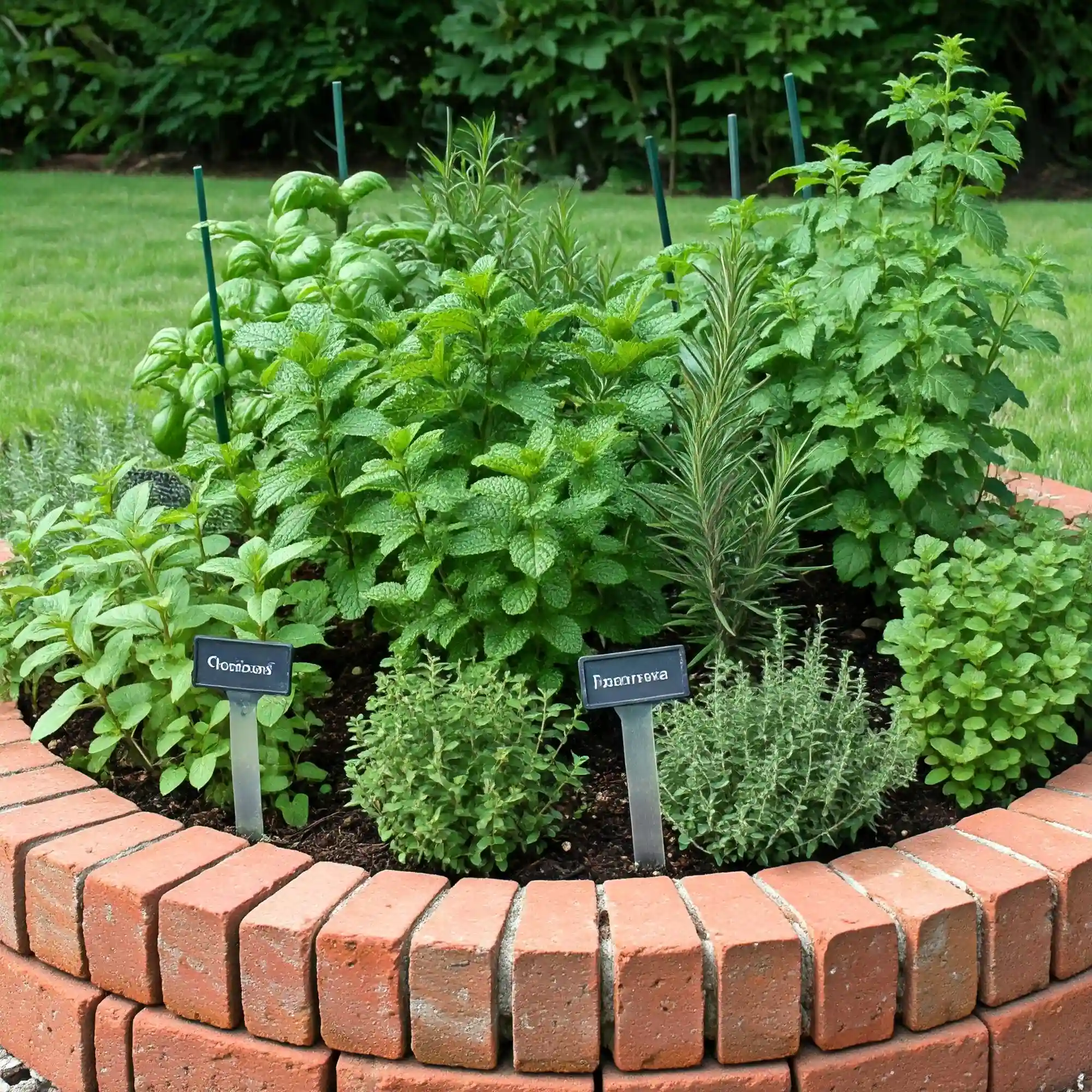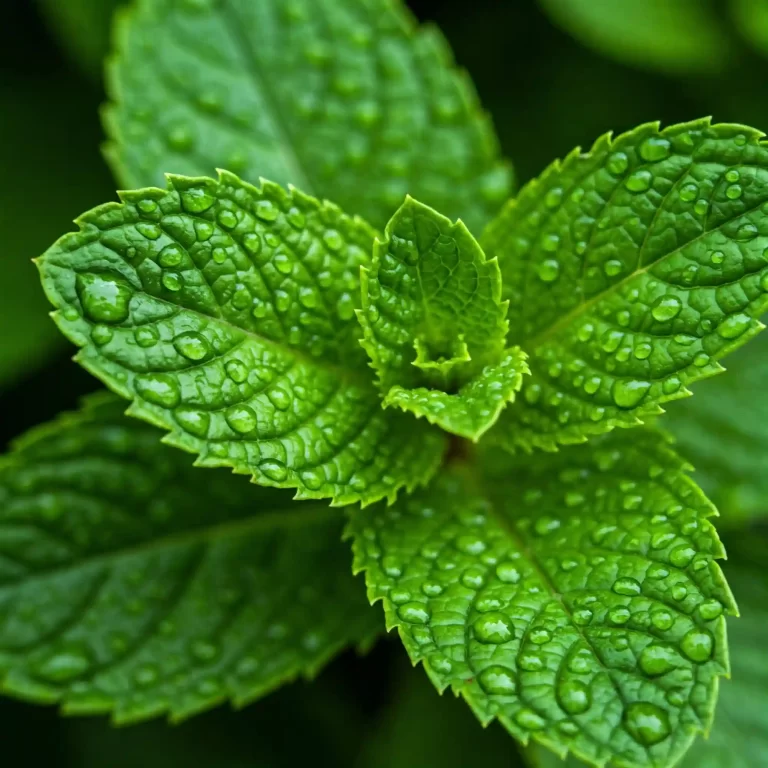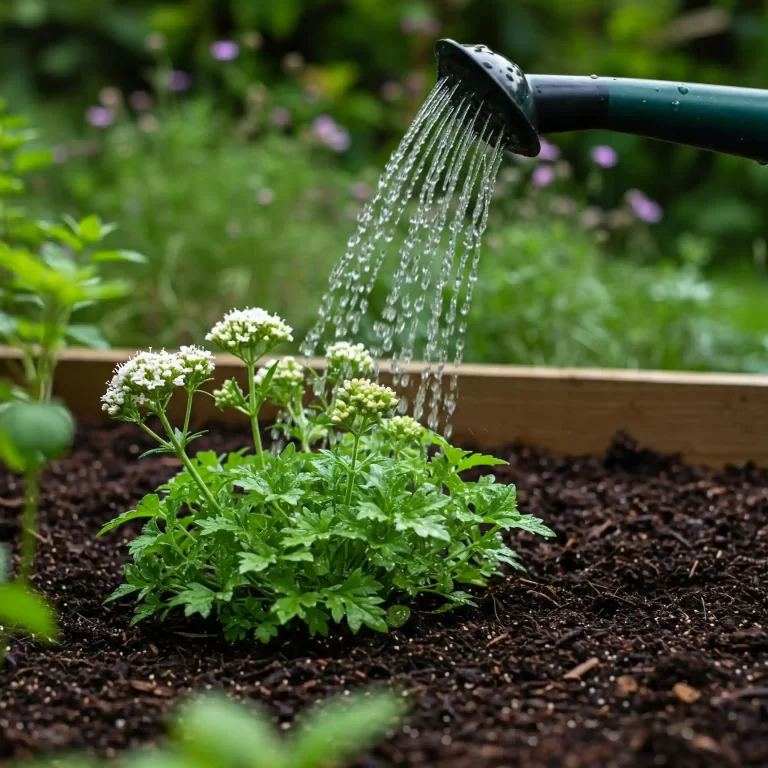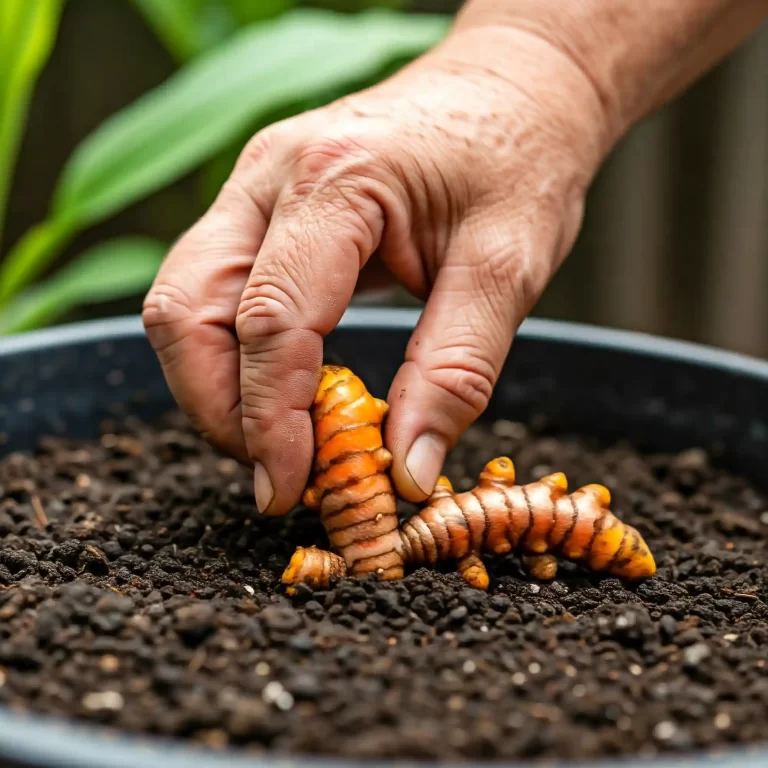Have you ever noticed how a sprinkle of fresh herbs can completely transform a dish? It’s like adding a burst of sunshine to your plate. But what if I told you that you could easily grow these flavor enhancers yourself, especially those that perfectly complement the rich umami of soy-based cuisine? Many of us, myself included at one point, rely on store-bought dried herbs, which often lack the vibrant aroma and taste of fresh ones. This can make your homemade dishes fall flat, especially when you’re aiming for authentic Asian flavors that rely heavily on fresh aromatics. Imagine preparing a delicious tofu stir-fry or a flavorful soba noodle bowl, only to find that the herbs you add are dull and lifeless. The solution? Growing your own soy herbs. This guide will walk you through everything you need to know about how to grow soy herbs, from choosing the right varieties to harvesting and using them in your favorite recipes. It’s easier than you think, and the rewards are well worth the effort.
Understanding Soy Herbs: What Complements Soy’s Flavor?
When I talk about “soy herbs,” I’m referring to herbs that are commonly used in Asian cuisine, especially those that pair exceptionally well with the unique flavor profile of soy sauce, tofu, tempeh, and other soy-based ingredients. These herbs often possess bright, citrusy, or slightly spicy notes that cut through the richness of soy, creating a balanced and complex flavor experience. You see, the magic lies in the interplay of flavors. Soy provides a savory, umami base, while the herbs contribute freshness, aroma, and complexity. This synergistic relationship is what elevates a simple soy dish to something truly special.
Here are some key “soy herbs” that I highly recommend you consider growing:
- Cilantro (Coriander): This versatile herb, also known as coriander, is a staple in many Asian cuisines. Its bright, citrusy flavor pairs beautifully with tofu scrambles, Vietnamese pho, and various Asian-inspired salads. I’ve found that cilantro is relatively easy to grow, especially if you provide it with plenty of sunlight and well-draining soil. It is a must when you want to learn how to grow soy herbs.
- Ginger: With its warm, spicy, and slightly sweet flavor, ginger is a key ingredient in many soy sauces, marinades, and stir-fries. Growing your own ginger can be incredibly rewarding, as fresh ginger has a much more intense flavor than the dried, powdered version. It is a rhizome, so you plant a piece of the root, not seeds. I’ve found that it thrives in warm, humid conditions.
- Basil (Especially Thai Basil): While sweet basil is more common in Western cuisine, Thai basil, with its anise-like flavor, is a perfect complement to soy-based dishes. It adds a unique depth of flavor to stir-fries, curries, and noodle dishes. I highly recommend it for those who are looking for how to grow soy herbs.
- Lemongrass: This fragrant herb, with its citrusy and slightly floral aroma, is often used in soy-based broths, soups, and curries. It’s important to note that lemongrass prefers warm climates and plenty of sunlight. I personally find its aroma intoxicating.
- Mint: While perhaps less common than the other herbs on this list, mint can add a refreshing touch to some Southeast Asian dishes that incorporate soy. It also pairs surprisingly well with soy-based desserts, adding a cool contrast to the sweetness.
Flavor Profiles and Culinary Uses
| Herb | Flavor Profile | Common Uses with Soy |
| Cilantro | Bright, citrusy, slightly peppery | Tofu scrambles, Asian salads, Vietnamese pho, garnishes |
| Ginger | Warm, spicy, slightly sweet | Soy sauces, marinades, stir-fries, soups |
| Thai Basil | Anise-like, slightly spicy, sweet | Stir-fries, curries, noodle dishes |
| Lemongrass | Citrusy, slightly floral, fresh | Broths, soups, curries, marinades |
| Mint | Cool, refreshing, slightly sweet | Some Southeast Asian dishes, desserts |
Understanding these flavor profiles is key to understanding how to grow soy herbs and use them effectively. I believe that by understanding the flavor profiles of these herbs, you can create truly exceptional culinary experiences. You’ll find that these herbs are not just ingredients; they are partners to soy, each enhancing the other in a delicious dance of flavors.
How to Plant Soy Herbs: A Step-by-Step Guide
Now that you know which herbs complement soy beautifully, let’s dive into the practical side of things: how to actually grow them. I’ve found that getting your hands dirty and nurturing these plants from seed to harvest is incredibly satisfying. You not only gain access to the freshest ingredients possible, but you also develop a deeper connection to the food you eat.
Starting from Seed vs. Buying Seedlings
One of the first decisions you’ll need to make is whether to start your herbs from seed or purchase established seedlings from a nursery. Both methods have their own advantages and disadvantages.
Starting from Seed:
- Pros: More economical, wider variety of choices, allows you to observe the entire growth process.
- Cons: Requires more time and attention, higher risk of failure, especially for beginners.
Buying Seedlings:
- Pros: Faster and easier, less prone to failure, provides a head start on the growing season.
- Cons: More expensive, limited variety, may have been treated with chemicals.
Choosing the Right Soil
Herbs, like all plants, need a suitable growing medium to thrive. I’ve learned that providing the right soil is one of the most crucial factors in successful herb gardening.
How to Plant Herb Seeds
If you decide to start from seed, here are some tips to maximize your success:
- Choose high-quality seeds from a reputable supplier.
- Use a seed-starting mix that is light and well-draining.
- Sow the seeds at the recommended depth, usually about ¼ inch deep.
- Keep the soil moist but not soggy.
- Provide adequate light, either natural or artificial.
- Be patient! Germination times vary depending on the herb.
How to Plant Herb Seedlings
If you opt for seedlings, here’s how to transplant them into your garden or containers:
- Choose a pot or garden bed that is appropriate for the mature size of the herb.
- Gently remove the seedling from its container, being careful not to damage the roots.
- Dig a hole slightly larger than the root ball.
- Place the seedling in the hole and fill with soil, gently firming around the base.
- Water thoroughly.
By following these steps, you’ll be well on your way to growing your own delicious soy herbs.
Caring for Your Soy Herbs: Essential Tips
Once your soy herbs are planted, providing them with the right care is essential for healthy growth and abundant harvests. From my experience, consistent attention to their needs will reward you with a continuous supply of fresh, flavorful herbs for your culinary creations.
Sunlight Requirements
Sunlight is the lifeblood of plants, and herbs are no exception. Most herbs thrive in at least 6 hours of direct sunlight per day. However, the specific sunlight requirements can vary depending on the herb:
- Cilantro: Full sun (6-8 hours)
- Ginger: Partial shade (4-6 hours)
- Basil: Full sun (6-8 hours)
- Lemongrass: Full sun (6-8 hours)
- Mint: Partial shade to full sun (4-8 hours)
If you’re growing your herbs indoors, you may need to supplement with grow lights to provide adequate light.
Watering
Proper watering is crucial for herb health. Overwatering can lead to root rot, while underwatering can cause wilting and stunted growth. Here are some general watering guidelines:
- Water deeply when the top inch of soil feels dry to the touch.
- Avoid watering the leaves, as this can promote fungal diseases.
- Water in the morning to allow the foliage to dry before nightfall.
- Adjust watering frequency depending on the weather and the specific herb.
Fertilizing
While herbs generally don’t require heavy fertilization, providing them with occasional nutrients can boost their growth and flavor. I recommend using organic fertilizers, such as compost tea or fish emulsion, diluted to half strength. Avoid over-fertilizing, as this can lead to leggy growth and reduced flavor.
Pest and Disease Control
Like any garden plant, herbs can be susceptible to pests and diseases. Here are some common issues and how to address them:
- Aphids: These small insects can suck the sap from your herbs. You can control them with a strong spray of water or by introducing beneficial insects like ladybugs.
- Spider mites: These tiny pests can cause webbing and discoloration on the leaves. You can control them with a strong spray of water or by using insecticidal soap.
- Fungal diseases: These can cause spots or mildew on the leaves. You can prevent them by providing good air circulation and avoiding overwatering.
By following these essential care tips, you can ensure that your soy herbs thrive and provide you with a continuous supply of fresh, flavorful ingredients.
How to Grow Soy Herbs Indoors
Growing herbs indoors is a fantastic option, especially if you have limited outdoor space or live in an area with harsh weather conditions. I’ve found that with a little care and attention, you can successfully cultivate a thriving indoor herb garden, providing you with fresh flavors year-round.
Benefits of Growing Herbs Indoors
- Year-round access to fresh herbs, regardless of the season.
- Protection from harsh weather conditions and pests.
- Convenient access for cooking and other culinary uses.
- Aesthetically pleasing addition to your home décor.
Suitable Herbs for Indoor Growing
While many herbs can be grown indoors, some are particularly well-suited to this environment:
- Cilantro: This fast-growing herb can thrive indoors with adequate light.
- Ginger: While it may take longer to mature indoors, ginger can be successfully grown in pots.
- Basil: This popular herb does well indoors with plenty of light and warmth.
- Mint: This versatile herb can adapt to various indoor conditions.
Tips for Growing Herbs Indoors
- Choose the right pots: Select pots with drainage holes to prevent waterlogging.
- Provide adequate light: Place your herbs near a sunny window or use grow lights.
- Use well-draining soil: Choose a potting mix that is light and airy.
- Water regularly: Keep the soil moist but not soggy.
- Fertilize occasionally: Use a diluted liquid fertilizer every few weeks.
- Maintain good air circulation: Ensure adequate airflow to prevent fungal diseases.
Growing herbs indoors can be a rewarding experience, providing you with fresh flavors at your fingertips.
Harvesting and Using Your Soy Herbs
Now that you’ve nurtured your soy herbs and watched them flourish, it’s time to reap the rewards of your labor. Harvesting your herbs at the right time and using them creatively in your cooking will elevate your soy-based dishes to new heights of flavor.
When to Harvest Your Herbs
The timing of your harvest can significantly impact the flavor and aroma of your herbs. Here are some general guidelines:
- Cilantro: Harvest the leaves when they are young and tender, before the plant bolts (goes to seed).
- Ginger: Harvest the rhizomes (underground stems) after the plant has flowered and the leaves have started to die back.
- Basil: Harvest the leaves regularly, pinching them off at the stem to encourage bushier growth.
- Lemongrass: Harvest the stalks when they are at least 1 foot tall and about ½ inch thick.
- Mint: Harvest the leaves as needed, pinching them off at the stem.
How to Harvest Your Herbs
Use sharp scissors or pruning shears to harvest your herbs. Cut the stems or leaves cleanly, avoiding tearing or crushing them.
Using Your Soy Herbs in Cooking
Fresh herbs can be used in a variety of ways to enhance the flavor of your soy-based dishes:
- Cilantro: Add fresh cilantro to tofu scrambles, salads, and as a garnish for soups and curries.
- Ginger: Use fresh ginger in marinades, stir-fries, and sauces.
- Basil: Add fresh basil to stir-fries, curries, and noodle dishes.
- Lemongrass: Use fresh lemongrass in broths, soups, and marinades.
- Mint: Add fresh mint to salads, desserts, and beverages.
By harvesting your herbs at the peak of their flavor and using them creatively in your cooking, you can unlock the full potential of your soy-based dishes.
Common Problems and Solutions When Growing Soy Herbs
Even with the best care, you may encounter some challenges when growing soy herbs. I’ve certainly had my fair share of gardening mishaps over the years, but I’ve learned that every problem has a solution. Here are some common issues you might face and how to address them:
- Yellowing Leaves: This can be caused by overwatering, underwatering, nutrient deficiencies, or pest infestations. Adjust your watering schedule, fertilize as needed, and inspect your plants for pests.
- Pests: Aphids, spider mites, and whiteflies are common herb pests. Use insecticidal soap, neem oil, or introduce beneficial insects to control them.
- Diseases: Fungal diseases like powdery mildew can affect herbs. Provide good air circulation, avoid overhead watering, and use fungicides if necessary.
- Stunted Growth: This can be caused by insufficient sunlight, poor soil, or overcrowding. Ensure your herbs are getting enough light, use well-draining soil, and thin out seedlings if needed.
By being aware of these potential problems and taking proactive steps to address them, you can keep your soy herbs healthy and productive. Remember, gardening is a learning process, and every challenge is an opportunity to grow as a gardener.
Frequently Asked Questions About Growing Soy Herbs
I’ve compiled a list of frequently asked questions about growing soy herbs to help you further on your gardening journey. These questions are based on common inquiries I’ve received from fellow gardeners, and I hope they provide you with valuable insights.
Q: How to grow fresh cilantro indoors for soy-based dishes?
A: Cilantro can be grown indoors with adequate light and well-draining soil. Place your cilantro pots near a sunny window or use grow lights to provide at least 6 hours of light per day. Keep the soil moist but not soggy, and harvest the leaves regularly to encourage continued growth.
Q: Best way to grow organic ginger in containers for soy sauce?
A: Ginger thrives in warm, humid conditions and can be successfully grown in containers. Choose a pot that is large enough to accommodate the rhizomes (underground stems), and use a well-draining potting mix. Plant the rhizomes horizontally, about 2 inches deep, and water regularly. Keep the soil moist but not soggy, and fertilize occasionally with organic fertilizer.
Q: How to grow Thai basil from seed for authentic soy stir-fries?
A: Thai basil can be started from seed indoors or outdoors. If starting indoors, sow the seeds 6-8 weeks before the last frost. Use a seed-starting mix and keep the soil moist but not soggy. Once the seedlings have developed a few sets of true leaves, transplant them into individual pots or into the garden. Thai basil prefers full sun and well-draining soil.
Q: How to grow a variety of herbs at home to complement tofu recipes?
A: A variety of herbs can be grown at home to complement tofu recipes, including cilantro, ginger, basil, lemongrass, and mint. Choose a sunny location with well-draining soil, and plant your herbs according to their individual needs. You can also grow herbs in containers, which allows you to move them around as needed.
Q: Step-by-step guide to growing lemongrass in pots for soy-based marinades?
A: Lemongrass can be grown in pots with well-draining soil and plenty of sunlight. Choose a pot that is large enough to accommodate the mature size of the plant, and plant the lemongrass in the center of the pot. Water regularly, keeping the soil moist but not soggy. Fertilize occasionally with a balanced fertilizer.
Conclusion: Cultivate Flavor, Cultivate Joy
Growing your own soy herbs is more than just a way to add fresh ingredients to your meals; it’s a way to connect with nature, cultivate patience, and nurture your own well-being. I’ve found that the simple act of tending to my herb garden brings me a sense of peace and joy, and I encourage you to experience the same.
By following the tips and techniques outlined in this guide, you can successfully grow a variety of soy herbs at home, regardless of your gardening experience. You’ll not only have access to the freshest, most flavorful ingredients possible, but you’ll also gain a deeper appreciation for the food you eat.
So, what are you waiting for? Grab your gardening gloves, choose your favorite soy herbs, and start cultivating your own flavorful oasis. Happy gardening!
I hope this blog post has provided you with valuable information on how to grow soy herbs. If you have any further questions, please feel free to leave a comment below.




